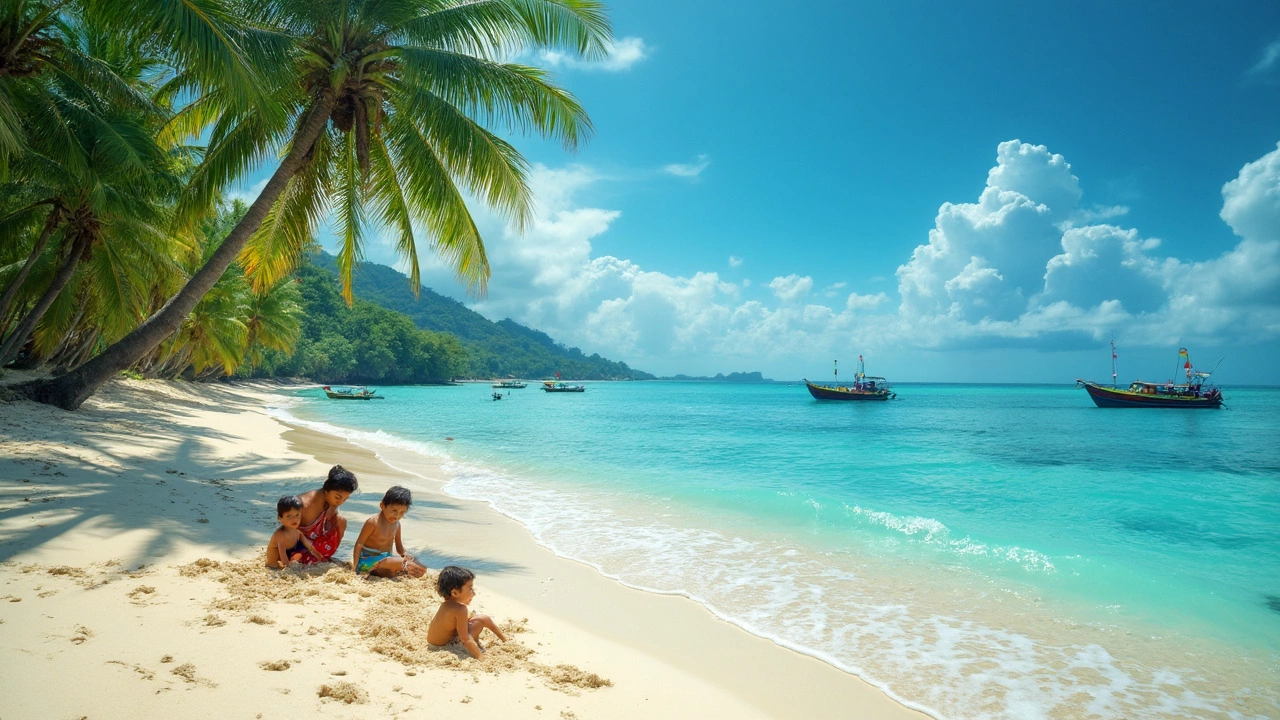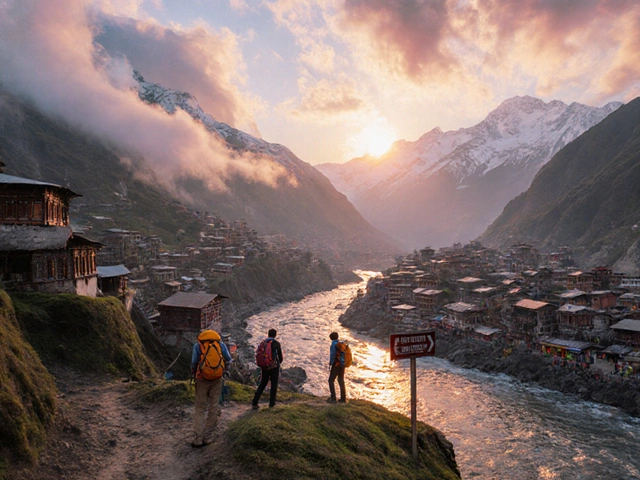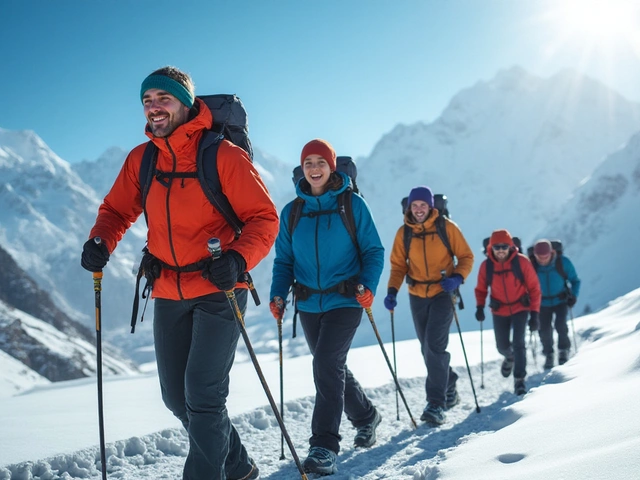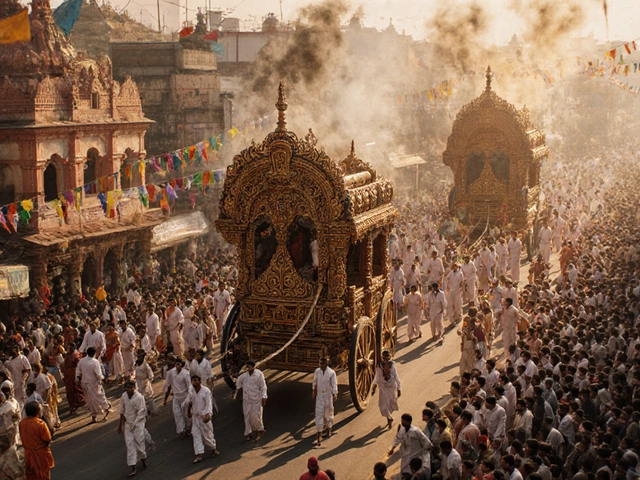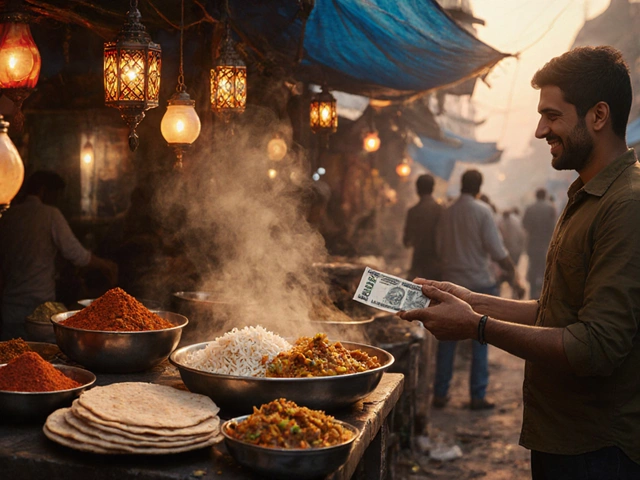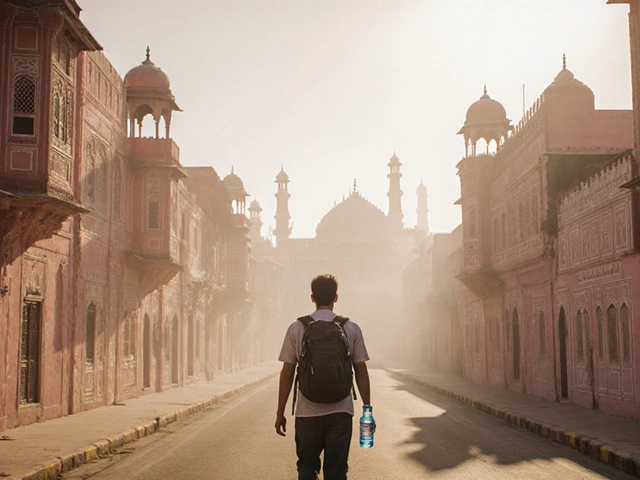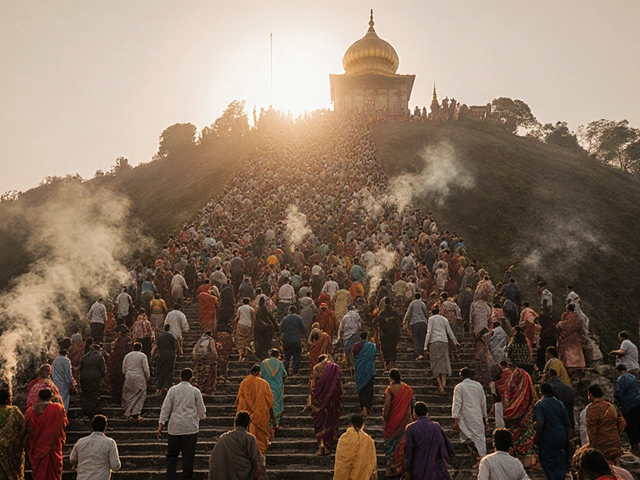You’d be surprised how many people think all Indian beaches have murky water. Truth is, there are beaches in India where the water is so blue and clear, you’ll have a hard time believing you’re still in the country. But there’s a catch—most of these amazing spots aren’t where the average tourist usually goes.
Before you run out to the nearest coast, here’s something you should know: not every beach in Goa or Kerala has that dreamy blue water you see on postcards. Finding those clear blue waves is a mix of the right place, season, and sometimes, a bit of luck. Most of the famous blue-water beaches are in remote areas, often on islands, and getting there needs some insider info.
I’ve dragged my daughter Aria along to hunt down the best ones, and trust me, it’s worth the effort. These places don’t just look good in photos—they actually deliver in real life. But why do some beaches in India have blue waters while others look brown or gray? Let’s get to the science behind those Instagram scenes.
- What Makes Water Look Blue?
- The Beaches in India Famous for Blue Water
- Ways to Experience the Best Blue Beaches
- Tips for Planning Your Blue Beach Trip
What Makes Water Look Blue?
Blue water isn’t just about the location—there’s real science behind those photogenic shores. It mostly comes down to sunlight, how deep the water is, what’s floating in it, and what’s below the surface. You know that clear, almost electric blue you see on the blue water beaches India travel posts? That color happens because water absorbs other colors from sunlight more than it absorbs blue. So, deeper water with less stuff floating around looks bluer to our eyes.
The next big thing is what’s in the water. If there are a lot of algae, mud, or waste, the water looks green, brown, or even gray. Beaches with less pollution, fewer river inlets, and hardly any boat traffic usually have clearer, bluer water. That’s why you find these jaw-dropping blues in protected areas or islands—less disturbance means less junk mixing in.
Want to see who wins in the blue-water sweepstakes? Here’s a quick comparison of popular Indian coastal regions, showing what usually affects water color:
| Region | Main Water Color | Why It’s That Color |
|---|---|---|
| Andaman & Nicobar Islands | Blue/Crystal Clear | Deep waters, little pollution, lots of coral |
| Goa (mainland) | Brownish/Greenish | Shallow water, lots of tourism, river run-off |
| Lakshadweep | Bright Blue/Turquoise | Pristine coral reefs, hardly any silt, no big rivers |
| Kerala | Mostly Greenish | Backwaters, silt, boat activity |
It’s not only about geography, though. Weather and seasons matter too. After a storm or during the monsoon, even the bluest spot can look dull thanks to all the stirred-up stuff from the seabed or rivers pouring in. Visit in the dry season and you’re way more likely to see the water at its best. Bottom line: if you want those clear, blue seas, you need to pick the right spot at the right time.
The Beaches in India Famous for Blue Water
Look up ‘blue water beaches India’ online, and you’ll mostly see pictures from the Andaman and Nicobar islands. This place is the MVP of stunning blue beaches in the country. Seriously, Radhanagar Beach on Havelock Island has been called Asia’s best beach by Time, and one visit will show you why. The water is clear, clean, and that unreal shade of turquoise everyone wants in their vacation photos. Good news if you don’t want a crowd—there’s plenty of space, even in busy season.
Another island option is Neil Island’s Bharatpur Beach. The water here is so transparent you’ll spot fish swimming just by standing ankle-deep. It’s great for snorkeling, and there are small shacks selling fresh coconut water and seafood. You don’t have to be a hardcore swimmer to enjoy it with kids; the shore slopes gently and there aren't strong currents.
The Lakshadweep islands are the next big thing, honestly. Bangaram Island is like a secret—almost no one knows about it because getting here is a little tricky (read: government permit needed). The reward: crystal clear water that’s genuinely blue, and untouched reefs for snorkeling. If you want an even more off-the-grid scene, head to Agatti or Kalpeni islands. Just keep in mind flights and ferries are limited, so you’ll need to book early.
Not everyone wants to fly to far-flung islands, though. Here’s the real talk: mainland India doesn’t have a ton of true-blue beaches, but there are a couple of exceptions. Tarkarli Beach in Maharashtra is famous for its clear water, at least outside of monsoon months. Snorkeling and even beginner diving are both options here — the coral isn’t massive, but water clarity is the best you’ll get on the western coast. The trick is going between November and February, when the water is at its cleanest.
- blue water beaches India hotspots: Radhanagar Beach (Havelock), Bharatpur Beach (Neil), Bangaram Island (Lakshadweep), Tarkarli (Maharashtra), Agatti/Kalpeni Islands (Lakshadweep)
- Best months to visit these beaches: November to May, when there’s less rain and water stays clear
- Permits are needed for Lakshadweep and some parts of the Andamans, so check requirements before you plan
If you’re curious about how these places compare, here’s a quick rundown:
| Beach | Mainland/Island | Water Color | Best Time to Visit | Kid-Friendly? |
|---|---|---|---|---|
| Radhanagar (Havelock) | Island | Bright Blue | Nov-Apr | Yes |
| Bharatpur (Neil Island) | Island | Cyan/Blue | Oct-May | Yes |
| Bangaram (Lakshadweep) | Island | Crystal/Cobalt Blue | Nov-Mar | Yes |
| Tarkarli (Maharashtra) | Mainland | Greenish Blue (clear) | Nov-Feb | Yes |
| Agatti/Kalpeni (Lakshadweep) | Island | Deep Blue | Nov-Mar | Yes |
Everything depends on the timing. Even the prettiest blue beaches can lose their magic in the rainy season. Pick your spot, plan ahead if you need travel permits, and you’ll be all set for that perfect blue-water India moment.
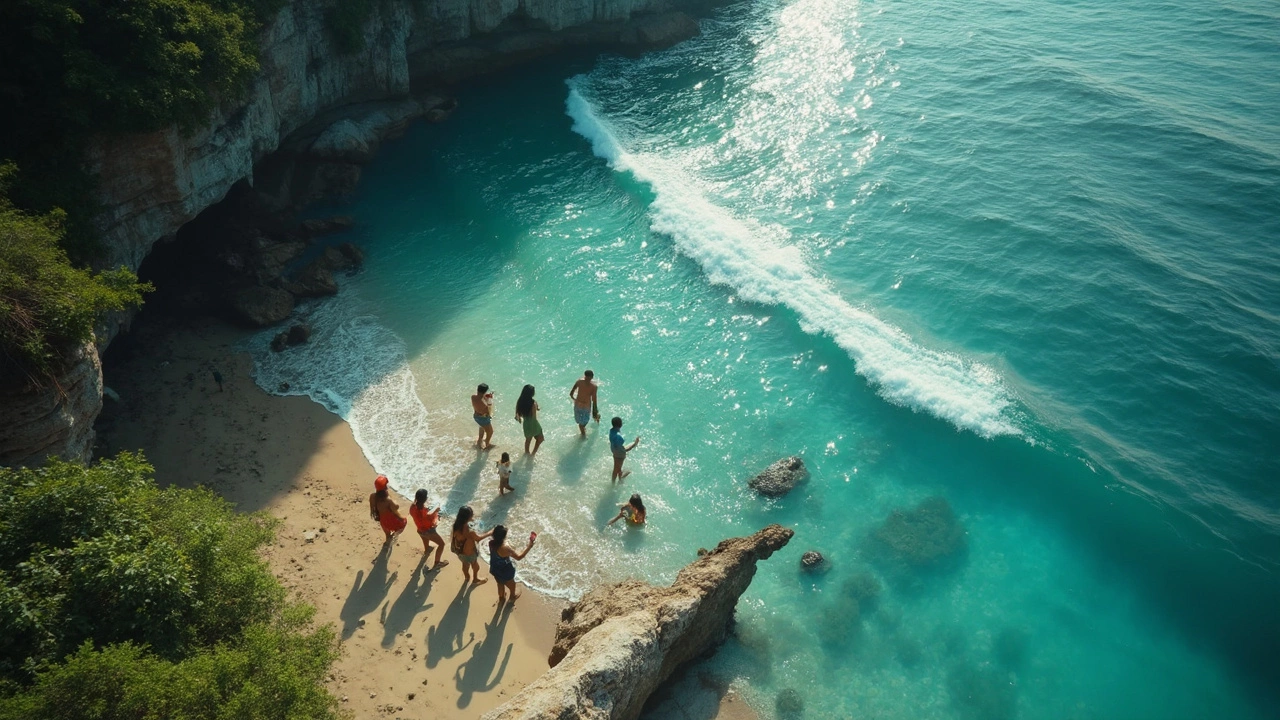
Ways to Experience the Best Blue Beaches
If you want to get the most out of your visit to India’s blue water beaches, a little planning goes a long way. It’s not just about showing up and hoping for magic. You’ve got to pick the right time, know what you want to do, and make travel simple—especially if you’re dragging kids like I usually am!
First off, the season matters. The bluest water usually shows up from November to early April, just after the monsoon has cleared and the sea calms down. During the rainy season or right after, lots of beaches look duller because the waves stir up sand and mud. To make it easier, here’s a cheat sheet on the best times and activities:
| Beach | Best Months | Top Activities |
|---|---|---|
| Radhanagar Beach, Andaman | December to March | Swimming, snorkeling, sunset walks |
| Bangaram Island, Lakshadweep | November to February | Kayaking, scuba diving, lagoon dipping |
| Agatti Island, Lakshadweep | November to April | Glass-bottom boat rides, underwater photography |
| Paradise Beach, Pondicherry | October to March | Beach volleyball, ferry ride, sandcastle fun |
Now, if you’re actually there, don’t just stick to sunbathing. Bring or rent snorkeling gear—even a simple mask will show you tons of colorful fish under that clear water. On Lakshadweep’s blue water beaches India, you’ll find reefs just steps from the sand. Don’t miss boat rides—they’re cheap and give you another angle for those blue water pics.
- Pack reef-safe sunscreen—normal stuff kills coral.
- Check ferry or boat options early; they fill up, especially on islands.
- Respect local rules on plastic: some islands fine you for carrying disposables.
- If you’re with kids, get them simple water shoes—the rocks can be sharp!
- No need to spend on fancy tours; local guides are usually friendly, affordable, and know the secret spots.
If you like stats: Andaman’s Radhanagar once topped “Asia’s Best Beach” list by Time Magazine and sees water visibility up to 25 meters during peak season. That’s almost like swimming in an aquarium! Just remember, these places get busy in December holidays, so early bookings are not just smart—they’re necessary.
Tips for Planning Your Blue Beach Trip
If you want to see *blue water beaches in India*, you need a little strategy. These aren’t the places you just show up to last minute with no plan. Here’s what I’ve learned after a few trial-and-error getaways – and what I wish someone had told me before booking!
- Season matters: The cleanest, bluest water happens right outside monsoon months. Aim for between November and early April. Monsoon (usually June-September) churns up sand and debris, making water look brown even at famous beaches.
- Pick your spot: Absolutely stunning blue water beaches are mainly in the Andaman & Nicobar Islands (like Radhanagar Beach, Neil Island, and Laxmanpur Beach). Other nice picks include Agatti Island in Lakshadweep. Goa’s Palolem and Butterfly Beach can look clear early morning, but don’t count on the Maldives-level blue.
- Book your travel early: Spots like Andaman and Lakshadweep require advance planning. For Lakshadweep, Indians need an entry permit, and only a set number of tourists get in every year. Flights to Port Blair (for Andaman) fill up months ahead during peak season.
- Stay close to the action: Beachside guesthouses or resorts save you time (and cab money). In places like Neil Island, you’ll want to wake up early to see that unbelievable blue before the boats and crowds arrive.
- Keep gear simple: Bring reef-safe sunscreen (the clear water often means live coral nearby), a hat, flip-flops, and good-quality sunglasses. Snorkeling gear is a bonus, but you can rent at most places.
- Respect the ecosystem: Blue water isn’t just pretty to look at—it’s a sign of a healthy environment. Don’t litter, avoid touching corals, and skip the plastic bottles. Most islands are strict about waste management now and you may have to carry trash back with you.
| Beach | Flight Cost (from Delhi) | Best Months |
|---|---|---|
| Radhanagar (Andaman) | ₹8,000–₹16,000 | Nov–Mar |
| Agatti (Lakshadweep) | ₹10,000–₹19,000 | Dec–Apr |
| Palolem (Goa) | ₹4,000–₹9,000 | Nov–Feb |
Another thing: cell service can be patchy on most islands, so download maps and offline entertainment for kids if you’re traveling as a family. For food, local seafood is a win, but check that places have basic options if you’re vegetarian or traveling with picky eaters. And yes, bring cash—ATMs run dry, especially on Neil and Havelock Islands.
The biggest mistake is thinking all blue water beaches offer the same vibe. If you want solitude, avoid long weekends and school holidays. Plan weekday stays and book accommodations away from the main ferry points for a quieter experience. Pack plenty of snacks, wet wipes (that island humidity is real), and a waterproof bag for your devices.
If your heart’s set on that perfect blue water beach, a little prep makes all the difference. Trust me, it’s worth it when you see that color in person.
